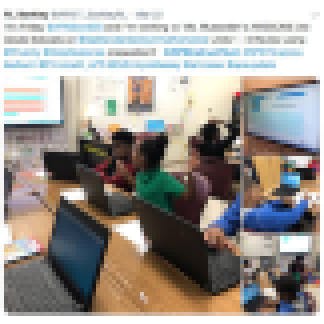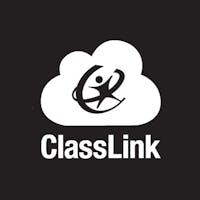“A ball of crazy!” That’s how Aleigha Henderson-Rosser describes the technical issues around access to digital learning resources when she joined Atlanta Public Schools (APS) in 2010 as Executive Director of Instructional Technology. More than 53,000 students and 6,000 teachers didn’t have standardized login details. Precious instruction time was wasted dealing with forgotten passwords and usernames. And with no central place to access digital resources, teachers and students were in the dark about which tools were even available. It may have been the thick of the digital learning revolution in the U.S., but students in Atlanta Public Schools were not reaping the benefits.
Henderson-Rosser blamed it on access issues. Over the next year, she and her team audited the district’s software and created a standardized approach to generating student login IDs and passwords. To Henderson-Rosser the logical next step was single sign-on (SSO). So her district turned to Classlink’s platform to give students—and staff—access to all the district’s available software apps and resources with just one set of login details, along with usage data to support district purchasing decisions. They branded the district’s SSO landing page as myBackpack, and promoted the site using posters created by Classlink to help students understand that now they could visit one webpage to access everything they needed when it came to digital resources.
Henderson-Rosser sat down with EdSurge to share how adopting SSO technology is giving students access to meaningful learning experiences, saving her district thousands of dollars and helping her achieve her technology vision for APS.
EdSurge: What is your vision for your district and how is SSO helping get you there?
Henderson-Rosser: I came to the district to rebrand the instructional technology department. I wanted to use educational technology software so students could create, produce, use critical thinking skills and be innovative and engaged. I wanted to move from, ‘this is how you insert clip art,’ to, ‘this is how to code robots in your classroom and make them move.’
But the first step was making it easy for teachers, students, and staff to access that software. SSO gives them that access. Now students are using Google Classroom. They’re narrating books. They use BrainPOP. If students were never able to sign in and sign in quickly, they still would not be able to use technology in the best and most innovative way.
Has SSO saved teachers time?
I've watched a teacher take 20 minutes to have kids log into something. If your class is 60 minutes long, you've already lost a considerable part of your instructional time. And now you've got to worry about classroom management issues because the students who are waiting may start acting out. It becomes too much of a hassle.
But with Classlink, students only have to remember one login to access all of their software, apps, and URLs. Suddenly using technology isn’t a hassle, and teachers see the benefits.
How is simplified access impacting students’ learning and engagement?
Take our early learners, for example. The most painfully frustrating thing you’ll ever see is a kindergartner typing in a username and password. It’s a hunt and peck. But Classlink has a Quick Card—kindergartners just scan the card and they are logged in.
It has revolutionized the way our early learners use technology. And it's turned our K-2 teachers onto using technology. They’re asking, ‘What else is out there that we can use in our classes?’ Before SSO, if the tech wasn't easy, they just didn't do it. It just took too much time to get 20 kindergartners logged in to something.
Now, these students are reading e-books, using virtual manipulatives in Minecraft to build and create, using Book Builder to tell and animate a story. There are some wonderful bits of edtech software for early learning. Getting to them had been a barrier.
Just look at the pictures our teachers tweet of students; at any grade level, you can see students are more engaged. They’re using their creative juices to produce something. They’re using robotics software, animation software, Google Drawings, Microsoft One Note.


And with ClassLinks’ analytics, we see such large numbers of teachers and students using educational software. These are software statistics we weren't able to pin down before, but now we see down to the number of hours that students and teachers are engaged in particular software.
What other changes have you seen in classrooms?
SSO gives students and teachers access to technology, and then they can take off into so many different directions.
Our teachers use centers in the classroom; with technology as an integral part of those centers, kids can do things on their own and be independent learners. That gives teachers time, space and energy in the classroom to sit and think about how students are doing, or to simply give a student a formative assessment. It’s easier for teachers to teach all learners at different levels and differentiate learning. They can see if a student has moved past a particular skill and assign something a little harder or see if a student needs extra help and give that support.
Having technology is step one in enhancing learning. Getting teachers and students to embrace and use technology that helps develop critical thinking, creativity, collaboration, and communication is the hard part; and SSO has given us the ability to make this just a bit easier to undertake!
With usage stats at your fingertips, have you been able to save money?
Oh yes! My media services coordinator had to make budget cuts this year, but we didn't want to start with people because we're a small staff.
So we looked at software usage—a power we didn’t have before. We were able to cut a particular software with low usage data and it saved us about $120,000 in an annual subscription. Quite frankly, that's one person's job. We were able to use ClassLink data to say, ‘How can we keep our teams intact, but still make an imperative cut that we have to make in terms of budget?’ That's a big one. Plus the data supports a clearer answer and everybody understands you’re not taking away something they loved; it was something that wasn’t really being used.
We can also look at our top software being used. We can see myON, for example, has over 400,000 logins. And we have logged in to Renaissance Learning almost a million times since the beginning of the year! When we talk about what are we spending money on and where are we getting our best usage, we can look at our top five apps and say, ‘Absolutely, we need to renew those. Those need to stay in the district.’
What advice would you offer to other district leaders considering adopting SSO—or already using it?
Before Classlink, we used another SSO provider that didn’t use the OneRoster open technology standard that lets schools share class rosters with digital learning resources. Adding new software to our SSO system got so unwieldy that we had to hire an additional project manager to manage the SSO piece. For every piece of software we wanted to add, we had to fill out this long form and then there was a 12- to 15-week turnaround. Who wants to wait three months to get to that software? Half your licensing period is gone!
But now because our SSO provider uses the OneRoster standard, after the initial set up, adding software is a click. Find a provider that uses OneRoster. It will make things a lot easier!



